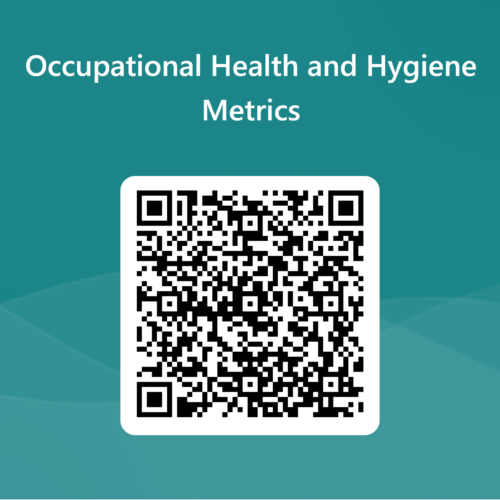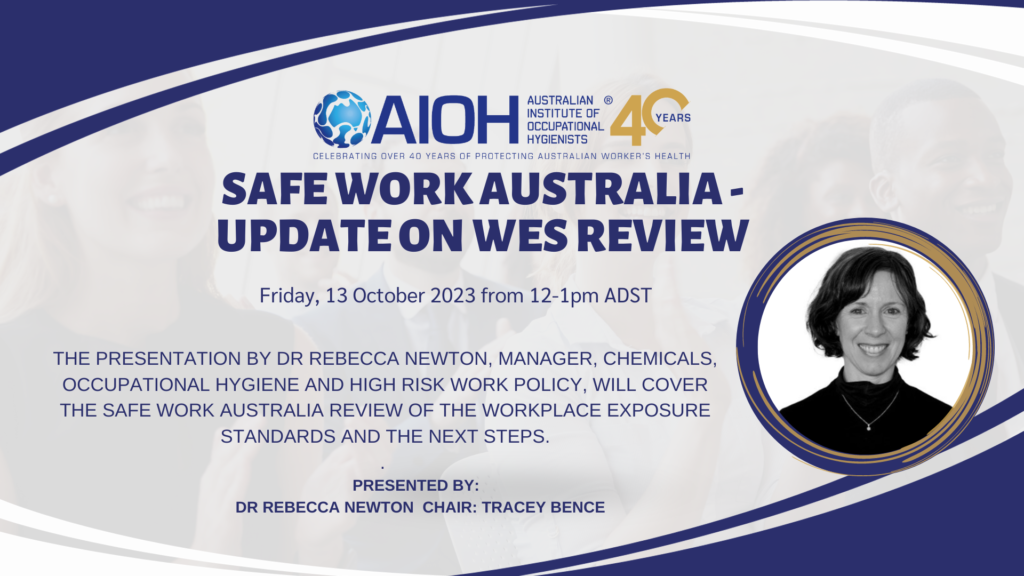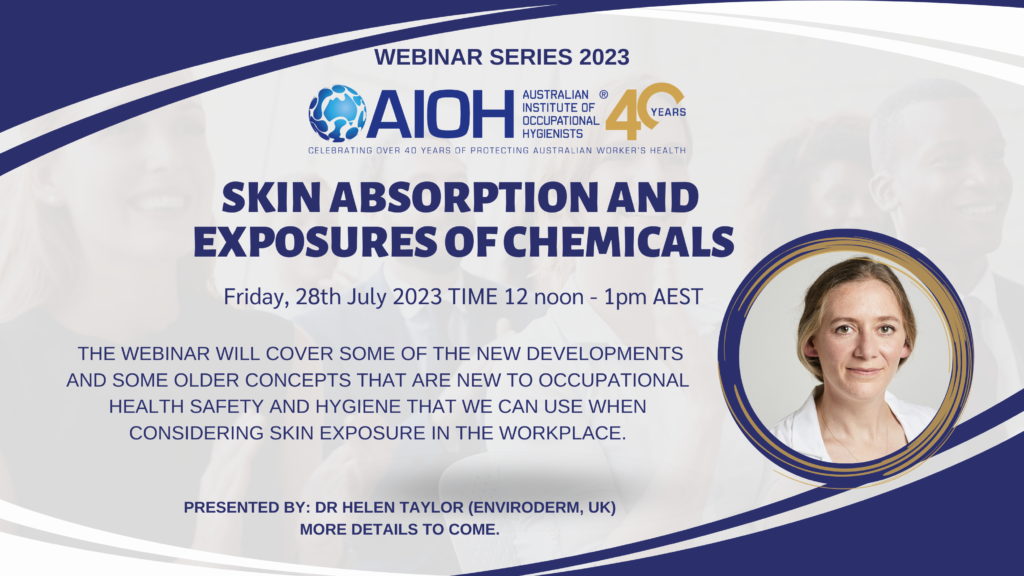Webinar Recording – What does good health look like? – Recording 24/05/24
Presenter(s): Presenter/s: Dr Carmen Naylor, Chair Jane Whitelaw
You may also like

The panel will discuss the recent change to the welding fume (not otherwise specified) exposure standard, how can exposure to welding fumes be controlled, how can occupational hygienists help the industry understand the risks associated with welding fumes and what does the future hold with the announced Workplace Exposure Limits
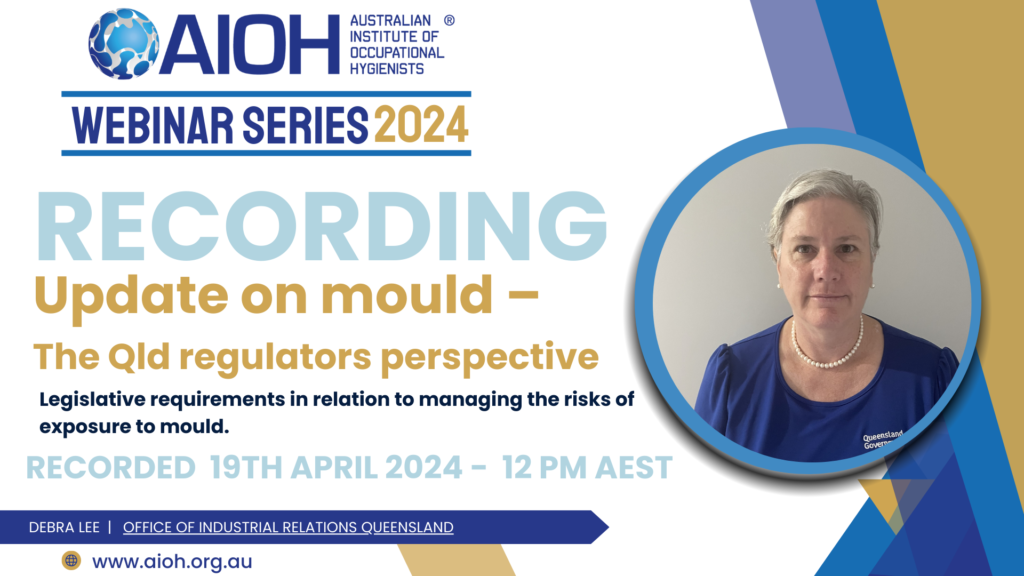
Recorded 19 April 2024
Update on mould - the Qld regulators perspective - 19 April 24 This webinar will include topics including: Legislative requirements in relation to managing the risks of exposure to mould. What does compliance look like? What would the inspectorate look for in relation to a complaint?

Isocyanate Resins Exposure Monitoring- 22nd March 24 Isocyanate-based polymeric chemicals are used extensively in mining and construction to fill cavities and reinforce or stabilise strata in the underground environment. Methylene diphenyl isocyanate (MDI) is a common ingredient and is a known respiratory sensitiser and skin allergen which can be inhaled or absorbed through direct skin contact. RSHQ has been investigating the adequacy of current atmospheric and biological monitoring techniques.

Winner - 2023 AIOH Conference 3M Best Paper Award.
This paper discusses the controversy over the use of the linear non-threshold (LNT) model and presents the case for the existence of a threshold of effect for both asbestos and crystalline silica. The existence of threshold affect does not support the suggested need to further reduce the current OELs for these substances and others. Presented by Ian Firth

This webinar will provide an update on the ISO Respiratory Protective Devices Standards, bringing this global Standard back to home.
Standards are used to demonstrate conformance to local regulations / laws. There is a new set of globally harmonised standards for respiratory protective devices (RPD) that changes the focus from performance by design to performance required by the wearer. The work on these standards started more than 20 years ago; with several RPD standards already published.
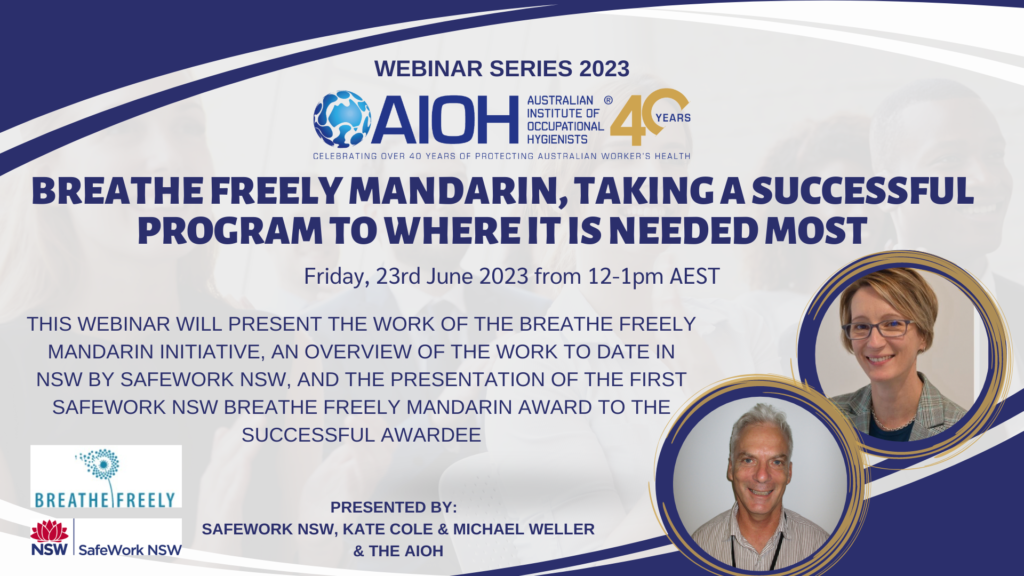
The Australian Institute of Occupational Hygienists (AIOH) launched Breathe Freely Australia in 2018, which provides readily available information for workers and supervisors about the hazards of toxic dust and prevention of lung diseases in various industries. In 2020, the AIOH started the RESP-FIT program, which is relevant to those who rely on respirators as protection against harmful dust. As many lung diseases are serious and irreversible, the focus must be on prevention of harm. Workers in the manufactured stone sector rely on many control measures to protect them from lung diseases such as silicosis, with one of them being respiratory protection.

Webinar Recording – Lithium Batteries, Occupational Health and Hygiene Update – Friday 9th June 2023
Lithium Batteries, Occupational Health and Hygiene Update
Recorded: Friday June 9th 2023 from 12-1pm AEST

This webinar will look at virtual reality as a means of helping workers to see what they otherwise cannot. Virtual reality is an administrative control, that can be used to provide a powerful message to workers to help them reduce their exposure by being able to understand where an unseen hazard exists. We will look at a case study in an underground coal mine and how the training was developed, providing tips along the way of how this can be achieved.
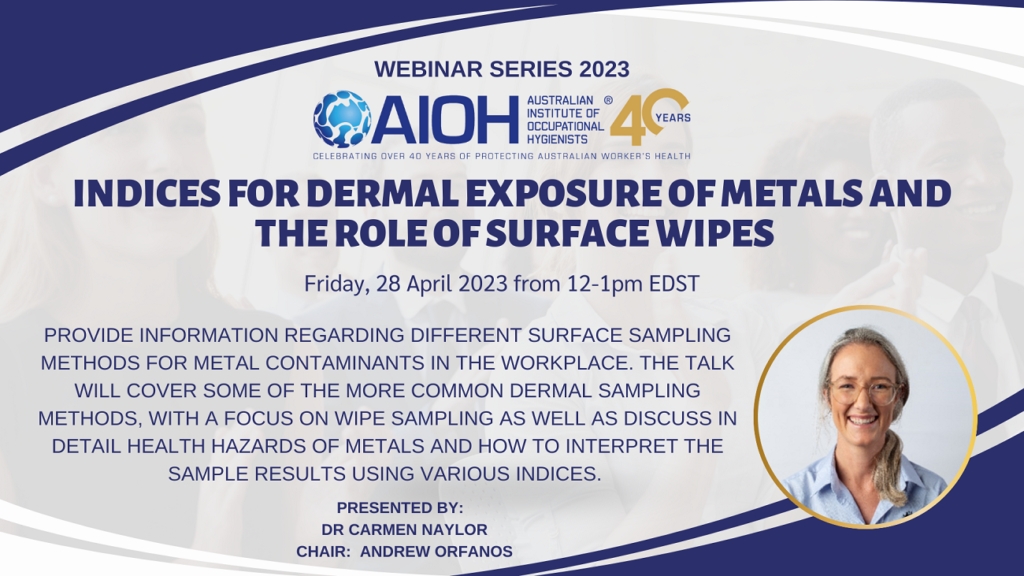
This webinar will provide information regarding different surface sampling methods for metal contaminants in the workplace. The talk will cover some of the more common dermal sampling methods, with a focus on wipe sampling as well as discuss in detail health hazards of metals and how to interpret the sample results using various indices.
